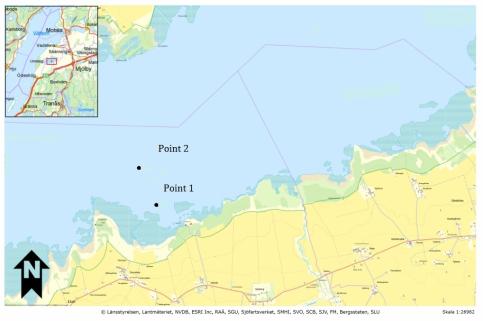Methods

Sampling was done in L. Tåkern every second week from April to September. Variables that is measured are abiotic factors (turbidity, transparency, Chl a, Tot-P, resuspended sediment etc.) and phyto- and zooplankton density grazing pressure and species development.
Additionally, an experiment was made regarding whether zooplankton are affected by high levels of turbidity.
Lake Tåkern is a shallow, eutrophic lake situated in southern Sweden (58°21’N, 14°50’E), which has a history of varying between turbid and clear water state (Blindow, et al., 1993).
L. Tåkern is included in the Ramsar Convention, which is an intergovernmental agreement that provides the framework for national action and international cooperation for the conservation and use of wetlands (Ramsar, 2017). L. Tåkern is an international important bird lake, which shifts between clear water and turbid states affects the water fowl as well as human recreation (Länsstyrelse, 2017).
In summer of 2015, submerged vegetation was sparse and the development of submerged vegetation during 2016 was crucial for the shifts to turbid or clear water state. During spring and summer of 2016 submerged vegetation did re-establish in lake Tåkern (Unpublished data from Anders Hargeby, 2017).
Sampling started in April 21th 2016 and samples were taken one a week from April-June and every second week during the growing season July- September (Appendix, Table 15). The last sample was taken September 6th. Totally 15 samples were taken during 2016. Due to a dry period in southern Sweden during end of summer 2016 (SMHI, 2017), sampling was cancelled in the beginning of September instead of October.
Water samples for chemistry, suspended particles and plankton was taken with a plexiglass tube (2 m) to cover the entire water volume. This was done by water were taken from different locations around the boat and poured into a container of 5 litres. For a couple of weeks an extra sample for suspended particles was taken and sieved through a 0.2 µm mesh to eliminate large amounts of zooplankton in the sample (May-June).
Samples were taken by boat at two specific locations marked by GPS. Point 1 (coordinate: 6468458;1441821) is close to shore, partially protected from wind induced resuspension and more shallow (0.80 m in May) then point 2. More specifically protected from western and southern wind (and thus got a lower impact from wavelength and fetch) (Figure 2). Point 2 (coordinate: 6469062;1441561) is located about 700 m from shore where wind induced resuspension had full effect, this point was also a lot deeper then point 1. Point 1 and 2 was always analysed separately.
Weather data
June and July have been a lot dryer in comparison to the latest seven years (Appendix, table 14). Summer of 2016 was a documented dry summer compared to previous summers in Östergötland county (SMHI, 2017).
Velocity (m S-1) and temperature (°C) was normal during 2016 (Appendix table 15) (SMHI, 2017).
Statistics
To compare correlations and interactions for this study, a non-parametric test was used: Kendall rank correlation coefficient (Kendell’s tau coefficient), with 95% significance level.
Software used was IBM SPSS statistics 24, R studio v 3 and minitab.
Experimental design
This experiment was inspired by Levine, et al. (2005) to examine if and by which amount of resuspended sediment and level of turbidity, zooplankton was affected off. Water, Daphnias and lake sediment was collected from L. Tåkern in close approximaty to the start of the experiment.
The experiment was conducted as following:
Different amount of lake sediemnt was added to 40 250-ml bottles with 20 Daphnia sp and filtered lake water (100µm mesh) in each. The bottle was made of seethrough glass with a screw cap. Samples was divied in four groups,with 10 samples in each group. In group 1, no sediment was added. In group 2, ca 55 mg sediment was added. In group 3, ca 300 mg sediment was added. In group four, ca 1000 mg sediment was added.
The samples were placed at moving tables for 4 days. Timers was set so tables would move for 10 minutes, and be still for 10 minutes. This to give Daphnia a chance to graze while the water was still turbid (Levine, et al., 2005).
The results of the experiment were analysed by Kendall’s tau correlation index. The hypothesis was that zooplankton would be affected by high turbidity and high amount of resuspended sediment (Levine, et al., 2005) (Dejen, et al., 2004) (Lathrop, et al., 1999).
Responsible for this page:
Director of undergraduate studies Biology
Last updated:
05/28/17
